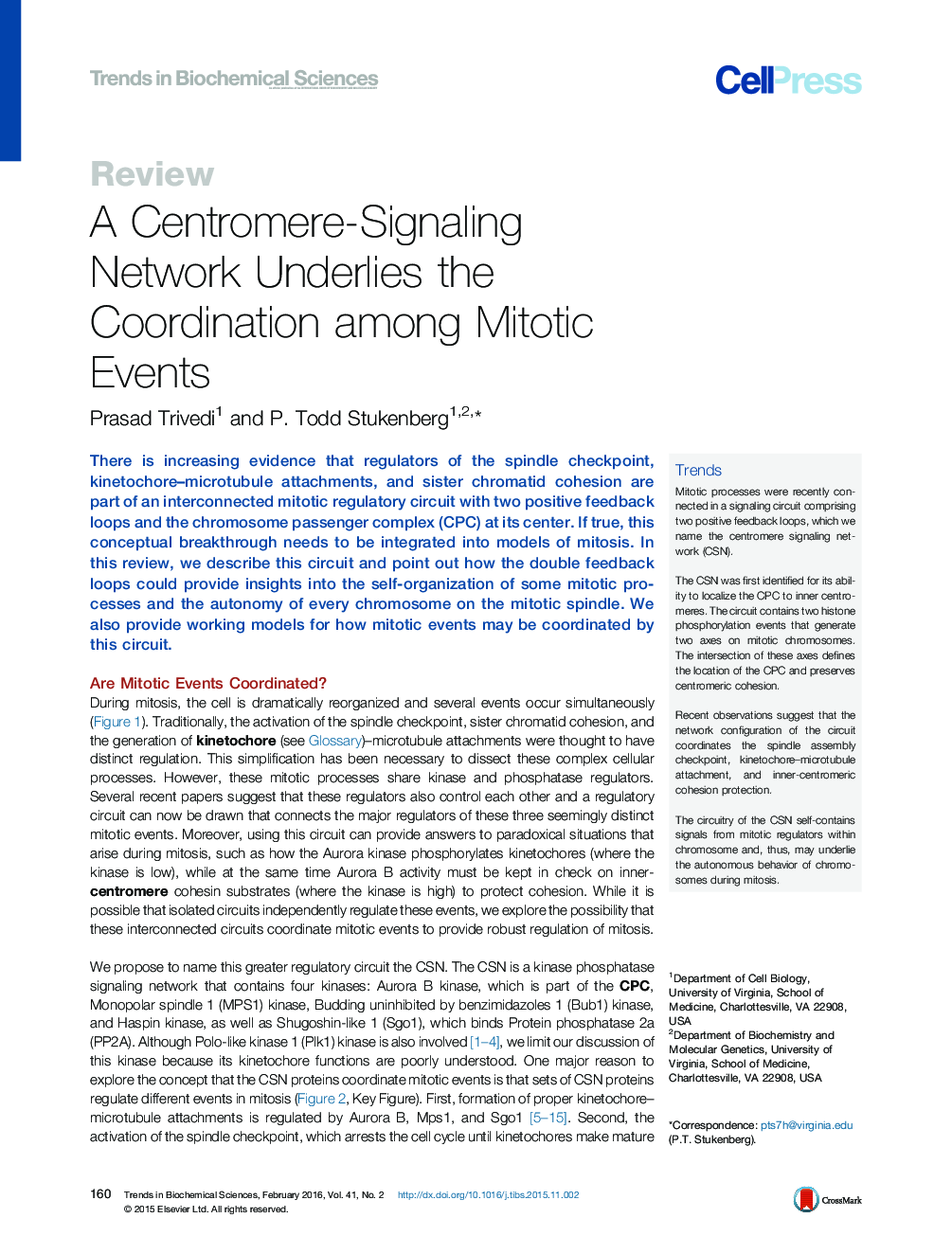| کد مقاله | کد نشریه | سال انتشار | مقاله انگلیسی | نسخه تمام متن |
|---|---|---|---|---|
| 2030490 | 1071209 | 2016 | 15 صفحه PDF | دانلود رایگان |
There is increasing evidence that regulators of the spindle checkpoint, kinetochore–microtubule attachments, and sister chromatid cohesion are part of an interconnected mitotic regulatory circuit with two positive feedback loops and the chromosome passenger complex (CPC) at its center. If true, this conceptual breakthrough needs to be integrated into models of mitosis. In this review, we describe this circuit and point out how the double feedback loops could provide insights into the self-organization of some mitotic processes and the autonomy of every chromosome on the mitotic spindle. We also provide working models for how mitotic events may be coordinated by this circuit.
TrendsMitotic processes were recently connected in a signaling circuit comprising two positive feedback loops, which we name the centromere signaling network (CSN).The CSN was first identified for its ability to localize the CPC to inner centromeres. The circuit contains two histone phosphorylation events that generate two axes on mitotic chromosomes. The intersection of these axes defines the location of the CPC and preserves centromeric cohesion.Recent observations suggest that the network configuration of the circuit coordinates the spindle assembly checkpoint, kinetochore–microtubule attachment, and inner-centromeric cohesion protection.The circuitry of the CSN self-contains signals from mitotic regulators within chromosome and, thus, may underlie the autonomous behavior of chromosomes during mitosis.
Journal: - Volume 41, Issue 2, February 2016, Pages 160–174
